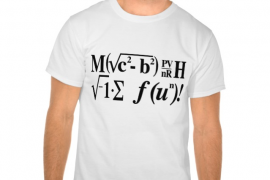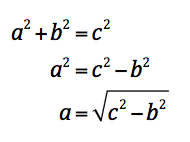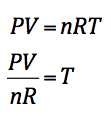We’ve all seen them. Mathy t-shirts, mugs and social media graphics that offer a fun phrase for those who can decode the message. But have these ever made you feel a little, well, not so mathy? Me too.So let’s unlock the mysteries of these inside jokes.
I’ve gathered a few of the most common t-shirts featuring math symbols. One by one, I’ll interpret them for you. Of course if you have any ideas to share, feel free. And if you disagree with my analysis, by all means, let me know!
Here’s to feeling much smarter.
Math is fun!
We’ll start with a doozy and break it down bit by bit.
M = M One of the shortcuts that these t-shirts take is simply inserting letters as variables. Or you could make an argument that the M in this example stands for mass.
This one took me a few moments to figure out. It’s based on the Pythagorean Theorem — solving for a. Here’s a quick rundown:
This is the Ideal Gas Law, which I know nothing about. But there’s some algebra to get from the law itself to this representation.
H = H Seems to me that this is simply the variable H, which could stand for just about anything. (If you have another suggestion, let me know in the comments section.)
I love this one! You may remember that you cannot take the square root of a negative number. And then you may remember that there is a very special number for the square root of -1. That number is the imaginary number — or i. It’s crazy to think that we can have imaginary numbers, but there you have it. It was important enough to create a whole new system of numbers so that we could deal with the square root of -1. (And yet, we still can’t divide by zero!)

If you were a Greek during college or remember a little bit of your Algebra II class, you’ll remember that this symbol is the Greek letter sigma. It’s used to denote summations — not the legal kind; the math kind. When you want to find the sum of a set of numbers, you can indicate it by using the letter sigma.
The last clue is a little bit of a fudge, I think. First the f and parentheses. In math-speak this represents a function, and you probably remember seeing it written like this: f(x). In this form, it means a function in terms of x. But — and here comes the not-so-accurate part, in my opinion — u raised to the nthpower is not something you would see in function notation. And u raised to the nth power doesn’t really translate to –un.
And that’s how you get “math is fun” from all of those symbols. Not too bad, eh? Next time, we’ll have some pie!







